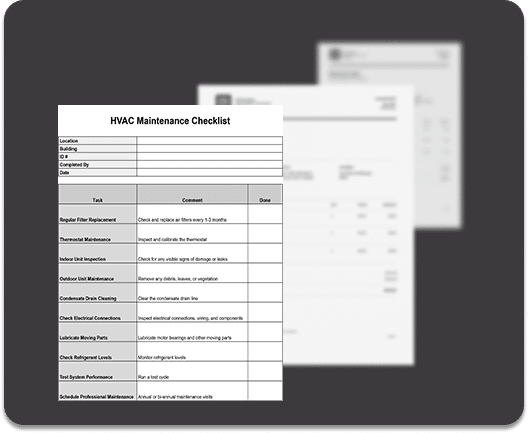Arnav Mathur & Maitreyee Mane*

The recent G20 Summit saw Indian cities experience a so-called ‘beautification’ initiative, which resulted in slum residents being enveloped with enormous green sheets and plastic materials. This article delves into the root causes of India’s housing poverty crisis, critically examining the housing policies enacted in the past 20 years. The authors argue that these policies fail to address Amartya Sen’s capabilities approach to development, perpetuating poverty and social exclusion cycles. They ultimately urge for sustainable solutions prioritising equitable access to safe and dignified housing for all to confront and address India’s housing poverty crisis.
I. Introduction
Indian metropolitan cities hide their biggest fear – slums. Recently, during events like the G20 Summit hosted by India, cities like Mumbai, Delhi, and Bangalore underwent extensive beautification efforts. However, beneath the façade of these endeavours lies the unsettling reality of slum dwellers being obscured and displaced using large green sheets, plastic coverings, and flex boards. This article endeavours to delve beyond the green sheets, shedding light on India’s housing poverty crisis by critically examining the policies implemented to address it.
Initially, the article explores the correlation between inadequate housing and poverty, emphasizing the impact of housing inadequacy on societal well-being. Subsequently, it offers a critical assessment of initiatives such as the Jawaharlal Nehru National Urban Renewal Mission, Rajiv Awas Yojana, Pradhan Mantri Awas Yojna, Model Tenancy Act of 2021, and the Affordable Rental Housing Complexes Scheme in tackling housing poverty. Through this assessment, the authors argue that these policies fall short of Amartya Sen’s capabilities approach to development. Finally, the article advocates for comprehensive and sustainable solutions in any future housing poverty policy.
II. Inadequate Housing As Poverty
Amartya Sen’s perspective on development is that of enhancing substantive freedoms, which are integral to individuals’ capabilities and the opportunities they enjoy. Consequently, poverty transcends mere income inadequacy and should be seen as capability deprivation.
In this context, inadequate housing represents a significant constraint on individuals’ capabilities, limiting their ability to reside in safe and healthy environments. The absence of secure housing impedes access to education, employment, and social interactions, curtailing people’s choices and freedoms while depriving them of fundamental necessities like clean water and healthcare. This situation perpetuates a cycle of poverty, hindering individuals’ efforts to uplift their living conditions. Notably, poverty and inadequate housing disproportionately impact marginalized communities, exacerbated by discriminatory practices in housing markets, such as exclusionary zoning and housing discrimination.
Any understanding of housing poverty entails defining ‘adequate housing.’ This encompasses essential amenities such as electricity, water supply, sanitation, and sewage management. It also involves ensuring sufficient income to access housing loans or rent accommodation. Therefore, effective policies to address urban housing shortages must prioritize expanding real freedoms, encompassing access to employment, social security, housing loans, tenure security, hygienic environments, clean water, green spaces, and social interactions. This comprehensive approach is essential for fostering inclusive and equitable societies.
III. Critical Assessment of Housing Poverty Initiatives
1. Jawaharlal Nehru National Urban Renewal (JNNURM) & Rajiv Awas Yojna (RAY)
The JNNURM, initiated in 2005, seeks to reform and develop India’s urban areas systematically. JNNURM comprises two main sub-missions. Firstly, the Basic Services for the Urban Poor (BSUP) endeavours to enhance living conditions in slum settlements. It focuses on providing essential amenities such as water, sanitation, healthcare, education, and social security. Secondly, the Integrated Housing and Slum Development Programme (IHSDP) aims to improve housing conditions for urban slum dwellers. This program complements BSUP by addressing poor housing conditions in urban slums not covered under BSUP.
In 2011, RAY was launched, recognizing market and government failures in securing the rights of the urban poor to a respectable standard of living. RAY emphasizes the integration of informal settlements into the formal economy. The program adopts a two-fold approach. Firstly, it focuses on slum redevelopment, preferably through in-situ methods, to enhance living conditions. Secondly, RAY aims to prevent the future proliferation of slums. To achieve this, it introduces the Affordable Housing in Partnership (AHP) scheme, facilitating Public-Private Partnerships to provide affordable housing units for rental and ownership purposes.
The housing initiatives of JNNURM and RAY were ostensibly designed to alleviate urban poverty and improve living conditions for marginalized communities. However, their execution has been filled with shortcomings, ultimately failing to address the root causes of poverty and capability deprivation.
Firstly, both initiatives have been criticized for the poor quality of the housing provided. Despite lofty aspirations, the housing units often fall short regarding basic amenities and structural integrity. Many beneficiaries live in dwellings that are not only substandard but sometimes even worse than their previous accommodations in slum areas. This not only perpetuates the cycle of poverty but also undermines the dignity and well-being of the residents.
Secondly, relocating slum dwellers from their original habitats to these new housing projects has disrupted their social networks and livelihood opportunities. The guiding principles of the JNNURM consisted of supporting slum upgrading rather than to relocate. However, the outcome shows a higher implementation of government funding for contractor-built housing, either as in-situ development (with the site cleared and conventional housing built) or on another site for development (relocation). Under JNNURM, the central aim of slum upgrading was not fulfilled to its potential. When the projects could instead choose between in-situ development and relocation, it can be clearly seen that a majority of the projects preferred relocation over in-situ development.
Under RAY, in-situ redevelopment projects saw an increase over relocation which helped in avoiding gentrification and maintaining the livelihood of slums to some extent. However, while relocation projects were lesser, in terms of dwelling units, they represented 31% under the scheme. Thus, relocation projects applied the principle of intensified use of land which forced the affected households to face a sort of double jeopardy – relocation plus an unwanted change of lifestyle.
The forced changes in lifestyle have heavy repercussions on social networks. These networks serve as crucial sources of support and resilience for individuals facing economic hardships, highlighting the importance of community ties in combating poverty. By uprooting these communities without adequate support systems, the initiatives have inadvertently exacerbated vulnerability and social exclusion among the urban poor.
Lastly, because of the heavy focus on relocating households without adequate consideration for their livelihood, the newer houses restrain their access to essential services and employment opportunities. A major drawback of the scheme is that in bigger metropolitan cities, affordable housing projects can only be built on the outskirts of the city, relatively distant from workplaces. Especially in dense metropolises like Mumbai and Delhi, affordable housing projects under the scheme seem to be restricted to suburbs and satellite towns far from the commercial centre. This creates difficulties in maintaining the social networks critical. Further, increased expenditure and time on transport put a constraint on the employment opportunities of the people ultimately exacerbating their capabilities.
2. Pradhan Mantri Awas Yojna (PMAY)
PMAY was launched in 2015 and aspired to eliminate India’s urban housing shortage by 2022. The mission is operationalized through four main verticals:
- In-situ Slum Redevelopment (ISSR): This vertical utilizes land occupied by slums to encourage private sector involvement in developing formal settlements for slum dwellers.
- Credit Linked Interest Subsidy (CLSS): Under this initiative, interest payments on housing loans up to INR 6 lakh taken by the Economically Weaker Sections (EWS) and the Low-Income Group (LIG) are subsidized at a rate of 6.5 per cent for a tenure of 15 years or the duration of the loan, whichever is shorter.
- Affordable Housing in Partnership (AHP): States and Union Territories (UTs) initiating affordable housing projects independently or in collaboration with the private sector are eligible for central assistance, provided the projects meet specified criteria.
- Beneficiary-led Individual House Construction or Enhancement (BLC): This vertical provides central assistance of INR 1.5 lakh to EWS households seeking to construct or improve existing houses.
First, a significant obstacle the applicants face is to possess a host of identity documents to access certain verticals under the scheme such as the BLC and CLSS. The Central Government has made efforts under Digital India Land Records Modernization Programme (DILRMP) to move to a conclusive system of titles. While a step in the right direction, the scheme has faced several hindrances such as incomplete, inaccurate and dispersed land records coupled with unamended central and state land registration laws. Measures like Unique Land Parcel Identification Number (ULPIN) which identifies every surveyed parcel of land and aims to prevent land fraud, especially in rural India, is limited in its application unless the pending rights are settled and the land records are updated. Furthermore, there is no uniformity in the approach adopted by different states in the technology used by DILRMP. The implementation of PMAY is obscured due to severe disparity in terms of data collection and lack of data standardization under DILRMP since this leads to unequal distribution of funds allocated by the centre under PMAY to different states.
Secondly, the housing constructed or enhanced under these schemes is predominantly located in the peripheries and outskirts of cities, areas that are often not officially designated as ‘urban’ by the government. Consequently, residents in these areas are ineligible for financial support under the PMAY-U scheme, further exacerbating their housing insecurity and perpetuating spatial inequality.
Finally, the CLSS component of PMAY-U has been criticized for its opaque and inaccessible nature. Individuals are only informed about their eligibility for interest subsidies after receiving the loan, leading to confusion and exclusion for many potential beneficiaries. This lack of transparency and clarity undermines the scheme’s effectiveness in providing meaningful financial assistance to those in need.
3. Model Tenancy Act, 2021 (MTA)
Initiating rental housing reforms and recommendations for amendments in tenancy laws were first JNNURM. These recommendations mandated repealing rent-control laws as a prerequisite to access aid under the mission. Subsequently, the MTA was endorsed for adoption by states and union territories, aiming to address various aspects of renting premises. The key objectives of the MTA include:
- Establishing a swift adjudication mechanism for resolving disputes related to tenancy.
- Regulating the renting of premises to safeguard the interests of both landlords and tenants.
- Addressing issues such as striking a balance between the rights of landlords and tenants, ensuring an adequate supply of affordable rental housing, formalizing the rental housing market, encouraging private sector participation, and making vacant premises available for rental purposes.
The MTA holds promise as a legislative framework to regulate landlord-tenant relationships and address rental housing challenges. However, its effectiveness hinges on successful implementation, which remains a significant hurdle.
The primary concern is the decentralized nature of land legislation in India, with states possessing the autonomy to adopt, partially adopt, or reject the Act altogether. This disparity in adoption could lead to non-standardized rent control measures across different states, undermining the Act’s intended goal of creating a uniform regulatory framework.
Moreover, certain aspects of the MTA require further refinement and clarification. For example, in Maharashtra, there are apprehensions that landlords may exploit the Act’s provisions to substantially increase rents, particularly concerning the revision cap previously set at 15% annually under the previous regime. Such uncertainties could deter tenants from embracing the Act, perpetuating existing challenges in the rental housing market.
4. Affordable Rental Housing Complexes Scheme (ARHC)
Launched amid the COVID-19 pandemic, the ARHC initiative operates as a sub-scheme under PMAY-U, aimed at enhancing the quality of life for urban migrants and the economically disadvantaged working in the industrial and non-formal urban sectors. The scheme aims to provide access to dignified and affordable rental housing in close proximity to workplaces. The implementation of the ARHCs scheme will follow two models:
- Utilization of Existing Government-Funded Vacant Houses: This model involves the conversion of government-funded vacant houses into ARHCs through Public-Private Partnerships (PPPs) or by public agencies.
- Construction, Operation, & Maintenance of ARHCs: Under this model, ARHCs will be constructed, operated, and maintained by public or private entities on their vacant land.
ARHC scheme, despite its noble intentions, faces significant challenges that undermine its efficacy in addressing the root causes of urban housing insecurity.
Firstly, it relies on existing government-funded public housing for conversion into rental units. While this approach aims to utilize vacant housing stock, it fails to address the systemic issues of housing affordability and accessibility. Many of these housing projects are located on the peripheries of cities, disconnected from essential services and economic opportunities. This spatial mismatch perpetuates social exclusion and limits the potential impact of the ARHC scheme on improving the lives of its intended beneficiaries.
Secondly, the financial sustainability model of the ARHC scheme raises questions about its long-term viability. By design, the scheme aims to be financially self-sustaining, primarily through rental income. However, the average rent levels prescribed by the scheme may not align with the affordability constraints of the target population. This disconnect between rent affordability and financial sustainability threatens to render the ARHC scheme inaccessible to those it seeks to assist, perpetuating the cycle of housing insecurity among urban migrants.
IV. Conclusion
Future policy initiatives must encompass a broader scope of interventions to combat housing poverty effectively. These measures should encompass provisions for transit shelters catering to temporary and seasonal migrants, alongside promoting the development of affordable rental housing options. Tailored credit instruments explicitly tailored for the informal sector and addressing the existing gaps within the affordable housing framework are essential. Additionally, there is a pressing need to foster an environment conducive to impact investment and social finance within the affordable housing sector while exploring avenues for philanthropic support. Incorporating principles of corporate social responsibility (CSR) and environmental, social, and governance (ESG) criteria can further enhance the effectiveness of these initiatives, ensuring sustainable and equitable outcomes.
Furthermore, it is imperative to recognize housing as an investment in the productive capacity of individuals, with affordable housing being an integral component of urban land use planning. Repurposing unutilized homes generated under previous housing initiatives could prove instrumental in addressing housing poverty.
In conclusion, while housing poverty may be effectively obscured from our sight, it should never be out of our minds. It is imperative that we acknowledge, confront, and address the stark realities of inadequate housing perpetuated by the shortcomings of current government policies. Ensuring that all members of society have access to safe and dignified living conditions necessitates a fundamental revaluation of existing initiatives. Therefore, it is imperative to keep housing poverty at the forefront of our consciousness, not only as a moral imperative but as a call to action for systemic change.
*Arnav Mathur is a second-year law student at NALSAR University of Law, Hyderabad.
Maitreyee Mane is a first-year law student at NALSAR University of Law, Hyderabad.



















